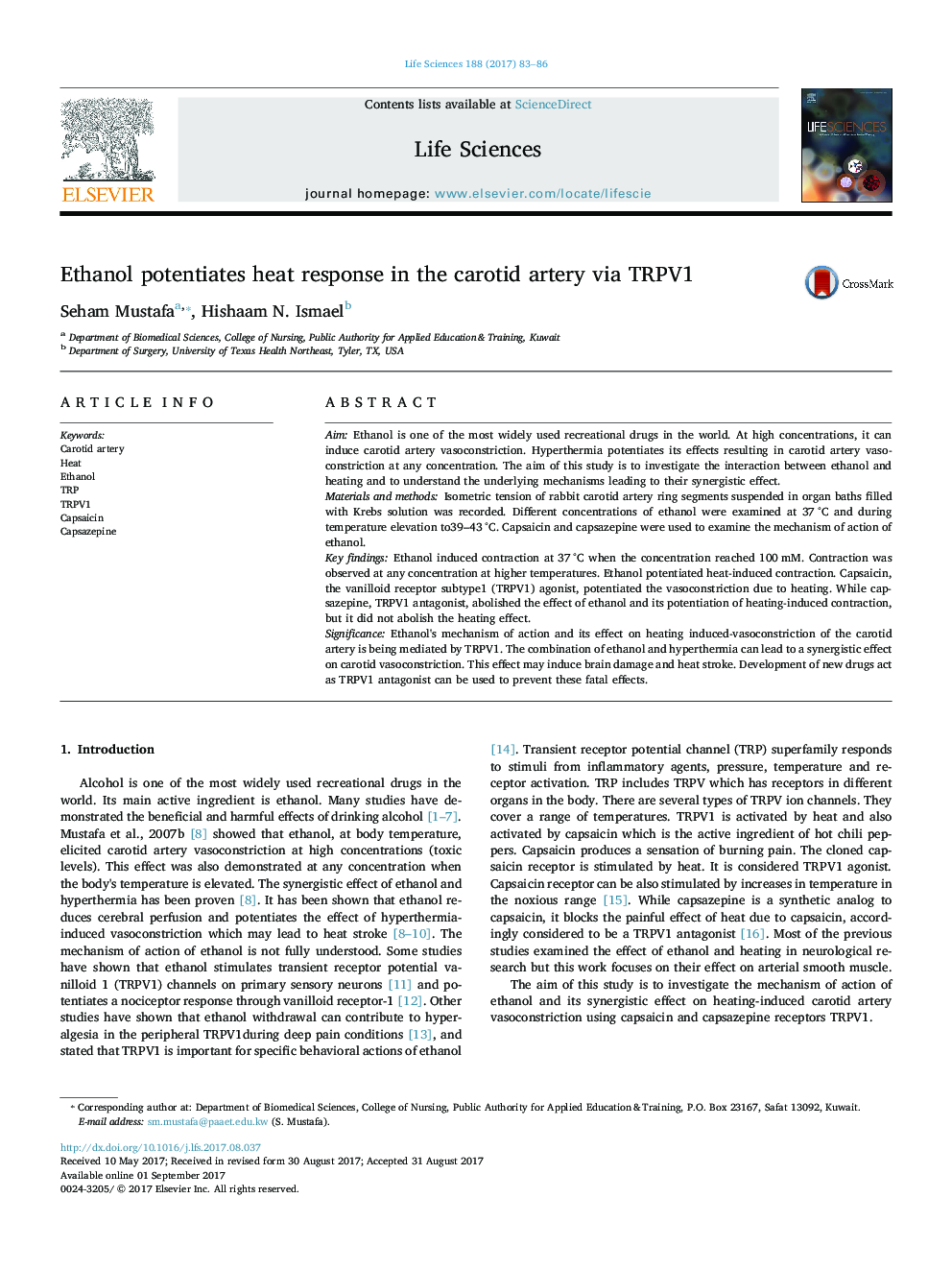| کد مقاله | کد نشریه | سال انتشار | مقاله انگلیسی | نسخه تمام متن |
|---|---|---|---|---|
| 5556882 | 1560540 | 2017 | 4 صفحه PDF | دانلود رایگان |

AimEthanol is one of the most widely used recreational drugs in the world. At high concentrations, it can induce carotid artery vasoconstriction. Hyperthermia potentiates its effects resulting in carotid artery vasoconstriction at any concentration. The aim of this study is to investigate the interaction between ethanol and heating and to understand the underlying mechanisms leading to their synergistic effect.Materials and methodsIsometric tension of rabbit carotid artery ring segments suspended in organ baths filled with Krebs solution was recorded. Different concentrations of ethanol were examined at 37 °C and during temperature elevation to39-43 °C. Capsaicin and capsazepine were used to examine the mechanism of action of ethanol.Key findingsEthanol induced contraction at 37 °C when the concentration reached 100 mM. Contraction was observed at any concentration at higher temperatures. Ethanol potentiated heat-induced contraction. Capsaicin, the vanilloid receptor subtype1 (TRPV1) agonist, potentiated the vasoconstriction due to heating. While capsazepine, TRPV1 antagonist, abolished the effect of ethanol and its potentiation of heating-induced contraction, but it did not abolish the heating effect.SignificanceEthanol's mechanism of action and its effect on heating induced-vasoconstriction of the carotid artery is being mediated by TRPV1. The combination of ethanol and hyperthermia can lead to a synergistic effect on carotid vasoconstriction. This effect may induce brain damage and heat stroke. Development of new drugs act as TRPV1 antagonist can be used to prevent these fatal effects.
Journal: Life Sciences - Volume 188, 1 November 2017, Pages 83-86